Region Locking Impact: Key Effects on Digital Content Access
Updated On: November 13, 2025 by Aaron Connolly
What Is Region Locking?
Region locking decides where you can use digital products and services, depending on your location. Gaming companies often set up these restrictions, which can affect things like game purchases or joining tournaments.
Definition and Core Mechanisms
Region locking blocks you from using certain digital content outside specific areas. Companies usually track your location using your IP address, payment details, and account settings.
Digital rights management systems check these automatically. If you’re in the wrong region, the system cuts off access right away.
Most region-locking uses a few main tools:
- IP geolocation—figures out where your internet connection is based
- Payment verification—checks if your bank card fits the region
- Account registration—keeps you tied to the country you signed up in
Gaming platforms like Steam and PlayStation Network combine all three. That makes accidentally bypassing restrictions pretty unlikely.
The system basically builds invisible walls around digital content. You might see a game for sale in Germany but find it blocked in the UK, even though both are in Europe.
Types of Regional Restrictions
Geo-restrictions show up in a few different ways for gamers. Purchase restrictions can stop you from buying games from other regions’ stores.
Content filtering lets you buy games but removes certain features. Some countries get censored versions—maybe less violence or tweaked character designs.
Release timing often changes by region. Japanese games, for example, sometimes launch months later in Western countries because of localisation.
Price discrimination is another thing. The same game might cost more in rich countries and less in developing ones.
Tournament restrictions keep players from certain regions out of competitions. This helps local tournaments but can block international participation.
Streaming services work the same way. Netflix shows different movies depending on where you are, and Twitch might block some esports streams in specific countries.
Industries Most Affected
Gaming gets hit hardest by region locking. Console makers like Nintendo used to lock hardware to regions, though the Switch finally broke that pattern.
PC gaming platforms still lock down a lot of titles. Steam’s regional pricing means Russian players pay less than British ones for the exact same game.
Streaming services restrict their content libraries heavily. BBC iPlayer only works in the UK, and Crunchyroll shows different anime depending on your location.
Mobile apps run into region barriers in app stores. Some games only launch in certain countries because of licensing or local rules.
Digital storefronts change their product lists by region. The same online shop might show different items to German and French users.
Esports tournaments add more restrictions. Regional leagues like LEC (Europe) and LCS (North America) only let in players from their own areas, which can make things tough for aspiring pros.
How Region Locking Works in Practice
Companies use a mix of technical tricks to control where you can access content. These systems lean on digital rights management tools and geographic detection to enforce restrictions without much warning.
Digital Rights Management and Enforcement
Digital rights management (DRM) sits at the heart of region locking. Content providers put DRM code right into games, videos, and streaming platforms.
This code checks your location before letting you in. If you’re outside the allowed region, DRM just blocks you.
Gaming platforms like Steam and PlayStation Store use DRM to control what games you can buy or download. The system checks your account’s region when you try to purchase or install.
Streaming services do the same. Netflix, BBC iPlayer, and others check your location every time you start watching.
DRM enforcement happens at several points:
- Account creation—asks for regional payment methods
- Content purchase—blocks transactions from the wrong areas
- Playback/installation—stops access even if you already bought the content
Some DRM systems keep checking your location while you use the service. Others only check when you first sign in.
IP Address Detection and Geographic Filtering
Your IP address gives away your physical location to websites and services. Companies use this info to slap on regional restrictions.
Geographic filtering matches your IP to a big database of locations. These databases list millions of IP ranges, each mapped to a country or region.
When you try to use a region-locked service, it checks your IP right away. If you’re not in the approved area, you get blocked before anything loads.
Platforms use a few different detection tricks:
- Primary IP lookup—finds your internet provider’s location
- DNS server location—checks your domain name server
- Time zone verification—compares your system’s time zone with your stated location
Mobile networks can make things even trickier. Your phone’s IP changes with cell towers, which can trigger restrictions if you’re traveling.
Some services check both your IP and your account’s registered address for extra security.
Common Technologies Used
Several technical systems work together to keep region locking in place.
Content distribution networks (CDNs) play a big role here. Companies like Akamai and Cloudflare run servers all over, but they can block content delivery to certain regions.
API geo-blocking stops apps from connecting to restricted services. Gaming platforms use this to block their launchers from downloading region-locked titles.
Here’s a quick look at some common tools:
| Technology | Purpose | Platform Usage |
|---|---|---|
| HTTP geo-filtering | Blocks website access | Streaming sites |
| DNS blocking | Stops domain resolution | ISP-level restrictions |
| Certificate restrictions | Limits secure connections | Mobile apps |
| Payment gateway filtering | Blocks regional transactions | Digital stores |
Browser fingerprinting adds another layer. Sites look at your browser settings, language, and plugins to double-check your location claims.
Modern region locking often mixes several of these. A streaming service might use IP checks, DRM, and payment verification all at once.
Cloud gaming services like GeForce Now run into special problems. They have to check both where you are and where their servers are.
Legal Foundations and Compliance
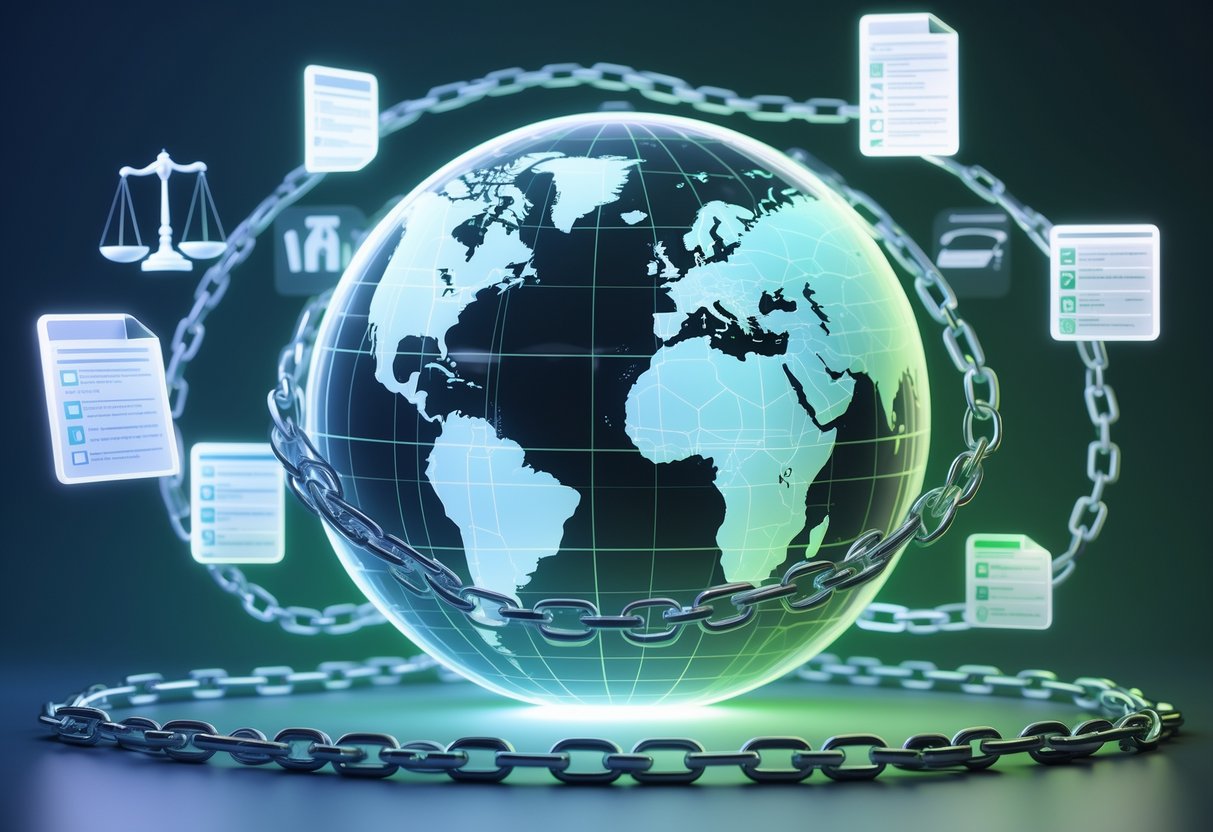
Region locking sits inside a maze of copyright laws, licensing deals, and territorial restrictions. Content providers have to juggle different compliance rules in each region, trying to balance business goals with legal demands.
Licensing Agreements and Territorial Exclusivity
Licensing agreements really drive region locking. They set out who can distribute content where, often giving exclusive rights to certain regions and blocking others from offering the same thing.
Content providers work out separate deals for each country or territory. A streaming service might get rights to a show in the UK but not in France. That’s why your favorite series sometimes vanishes when you travel.
Key parts of territorial licensing include:
- Clear geographic boundaries in contracts
- Exclusive distribution rights within those areas
- Revenue sharing based on local markets
- Different time limits for each region
These deals help content creators protect their investments by controlling entry into each market. But they also lay the groundwork for blocking access based on where you are.
The exclusivity approach lets content providers charge different prices in different places. They can tweak prices for each region, depending on what people can afford and how much demand there is.
Copyright Laws and Obligations
Copyright laws give creators the legal power to control how their work gets distributed worldwide. These laws change a lot from country to country, so streaming services have to keep up with a patchwork of rules.
Core copyright obligations include:
- Respecting territorial rights
- Blocking unauthorized access to protected content
- Using technical tools to enforce geo-restrictions
- Reporting compliance to rights holders
If content providers don’t enforce region locks properly, they risk legal trouble. Copyright holders can go after them for damages or get court orders to stop illegal distribution.
Things get messier when content crosses borders. One movie might have different rights holders in each country, each with their own rules.
Streaming platforms spend a lot on geo-blocking tech to meet these legal demands. They use IP detection and other tools to check user locations and block access as needed.
Compliance with Regional Regulations
Besides copyright, streaming services have to follow local broadcasting standards, content ratings, and data protection rules in every region.
Regional compliance headaches include:
- Different censorship rules country by country
- Local ad and promotion restrictions
- Data storage and privacy law differences
- Tax rules for digital services
The EU’s GDPR has stricter privacy rules than the US. Services have to adjust how they handle data in each place, while still trying to keep the user experience smooth.
Some countries want streaming services to show a certain amount of local content, so providers invest in domestic productions. Others put tight limits on content that may clash with global strategies.
Enforcement isn’t the same everywhere. Some governments keep a close eye and hit services with fines, while others let the industry regulate itself. This inconsistency makes it a real pain for companies working across lots of markets.
The Consumer Impact of Region Locking
Region locking throws up big barriers for people trying to access games and content from different places. Most of the time, it hits users in three main ways: limited access, a frustrating experience, and not much legal protection.
Consumer Rights and Access Limitations
Region locks directly block what you can buy or watch, just because of where you live. Gamers in some countries can’t buy certain titles, even if they’re happy to pay full price.
Major access restrictions look like this:
- Total blocking of game purchases in unsupported regions
- Smaller streaming libraries than other countries
- Hardware that won’t work right when you travel or move
- Software features switched off in some markets
Sony’s PlayStation Network ran into these problems recently. They blocked 177 countries from buying new PC games like Helldivers 2, shutting out millions of would-be customers.
Publishers usually make these choices to dodge legal compliance costs in tricky regions. But that leaves people with legit payment methods stuck on the sidelines.
Frustration and the User Experience
Region restrictions drive a lot of frustration for folks who expect global access. Many users see these rules as unfair, especially when they just want to buy content.
Common user headaches include:
- Different content available in each region
- Friends unable to play together across countries
- Delayed releases that give some people early access
- Tech issues when trying to get around restrictions
Gaming communities feel it the most when region locks keep friends from playing together. Players often turn to VPNs or other workarounds, but those can bring security risks or break the rules.
Managing different regional accounts gets old fast. Some users say they spend more time fighting restrictions than actually enjoying their games or shows.
Consumer Protection Laws and Remedies
Consumer protection laws aren’t the same everywhere, so safeguards against region locking can be pretty hit or miss. Most places don’t even have specific laws about digital content restrictions.
Here’s what the legal landscape looks like right now:
- EU consumer rights offer more protection than most areas
- Refund policies depend on local rules
- Class actions are possible but rarely tested
- Digital rights laws are still catching up
The Helldivers 2 backlash showed that consumer feedback can make a difference. Valve’s fair refund policy helped players push back, and Sony eventually changed course.
Some remedies for consumers:
- Disputing charges with your payment provider
- Reporting unfair practices to local agencies
- Asking for refunds under digital goods laws
- Supporting advocacy groups calling for reform
Still, most people don’t have much power when they’re up against big companies over region locks.
Region Locking in Streaming Services
Major streaming platforms like Netflix and Hulu use region locking to decide which content viewers can watch based on location. This leads to wildly different content libraries in each country, which can leave viewers annoyed when they can’t access shows available elsewhere.
Content Availability on Major Platforms
Streaming services put limits on what people can watch depending on where they live. Netflix, for example, offers different shows and movies in each country because of licensing deals.
What this means for viewers:
- A show on Netflix UK might be missing from Netflix US
- Popular series sometimes arrive months late in certain regions
- Some films never show up in specific countries through official channels
The big platforms handle these restrictions in their own ways:
| Platform | Global Reach | Content Variations |
|---|---|---|
| Netflix | 190+ countries | Massive library differences |
| Hulu | US only | Completely geo-blocked elsewhere |
| Amazon Prime | 200+ countries | Regional originals vary |
Studios sell rights separately to each country or region. This approach makes us deal with different content at various times and prices, all depending on where we are.
Geo-Restrictions and Library Variations
Geo-restrictions really shake up what streaming platforms offer. UK Netflix has about 6,000 titles, but US Netflix? Over 15,000.
Key factors that drive these variations:
- Local copyright laws change from country to country
- Cultural tastes shape licensing choices
- Local broadcasters compete for the same content
Some regions get exclusive content that others never see. Nordic countries usually get Scandinavian crime dramas first. Asian markets often pick up local productions that rarely make it to the West.
Streaming services use your IP address to figure out where you are. Once you connect, they serve up a specific content library for your region. This process fragments the viewing experience—identical subscriptions can mean totally different selections.
Case Study: Netflix and Hulu
Netflix shows how region locking splits up global streaming. The company launched worldwide, but each country gets its own library. Japanese Netflix, for instance, features tons of anime that you won’t find elsewhere. US Netflix leads with originals and Hollywood movies.
Hulu goes even further and blocks international access entirely. Because of complicated licensing with American broadcasters, Hulu stays US-only. If you try to access Hulu from abroad, you’ll hit a hard geo-block instead of just a reduced library.
Real-world impact:
- Netflix UK subscribers pay the same as US users but get fewer titles
- Popular US shows like The Office vanished from UK Netflix after licensing changes
- Watching Hulu’s The Handmaid’s Tale outside the US means using a different streaming service
Users try to get around these blocks with VPNs, but Netflix works hard to detect and block VPN traffic. Hulu’s geo-fencing is even stricter.
Gaming Industry and Region Locking

Region locking hits millions of gamers by limiting access and raising prices. Big publishers like Sony keep using these restrictions, even though the gaming community pushes back and tech could make global distribution simple.
Impact on Gamers and Communities
Region locking puts up artificial barriers that divide gaming communities by geography instead of shared interests. Publishers restrict games to certain areas, so friends in different countries might need separate platforms or miss out on playing together.
This leads to serious price discrimination. As of 2024, about 37% of Steam games have some kind of region restriction, according to SteamDB. So, gamers in different countries end up paying wildly different prices for the same digital game.
Communities take a hit when region locks block cross-regional play. Multiplayer games lose their worldwide appeal if players can’t connect across borders. Language barriers used to be a reason, but auto-translation and universal game mechanics have mostly solved that.
Warning: Lots of gamers try VPNs or account sharing to get around these blocks, but doing so can break the rules and get their accounts banned.
The worst part? Sometimes publishers add region locks after launch. Players who already bought the game can get locked out, which really damages trust.
Examples from Sony and Big Publishers
Sony recently blocked 177 countries from buying new PC games like Helldivers 2 and Ghost of Tsushima. These PlayStation Network restrictions hit countries without official PSN support.
The Helldivers 2 controversy really showed the community’s strength. When Sony tried to force PSN accounts, Steam reviews crashed from “Mostly Positive” to “Mostly Negative” in just three days. The backlash worked—Sony backed down.
Big publishers say they need region locks for a few reasons:
- Legal compliance with local laws
- Service agreements with partners
- Market control over prices and releases
- Anti-piracy for certain regions
But honestly, these excuses feel pretty outdated. Global content rating systems exist now, and digital stores handle compliance automatically. The reputation damage from angry gamers might outweigh any benefits.
Quick tip: Most region restrictions come from licensing deals, not technical barriers. It’s usually a business choice.
Latency and Regional Servers
Publishers often bring up latency concerns to justify region locking, especially for multiplayer games. High latency between distant servers can ruin competitive play.
But modern internet infrastructure has solved a lot of those issues. Global server networks and content delivery systems now keep ping times reasonable almost everywhere. Tons of esports titles run worldwide without big latency problems.
Regional server needs change depending on the game:
| Game Type | Latency Sensitivity | Regional Servers Needed |
|---|---|---|
| Turn-based strategy | Low | Optional |
| Real-time strategy | Medium | Recommended |
| First-person shooters | High | Essential |
| Fighting games | Very High | Critical |
MMORPGs used to rely on separate regional servers to keep latency and player satisfaction in check. These days, games like Final Fantasy XIV show that global servers can work well if the infrastructure is right.
Publishers once blocked entire countries to fight hackers. Instead of better anti-cheat systems, they just banned whole regions. That’s unfair and punishes honest players.
Now, anti-cheat and bot detection tech make regional blocks unnecessary for security. If a publisher still uses region locks for this, they probably haven’t invested in proper protections.
Economic Drivers: Pricing, Distribution, and Market Strategy
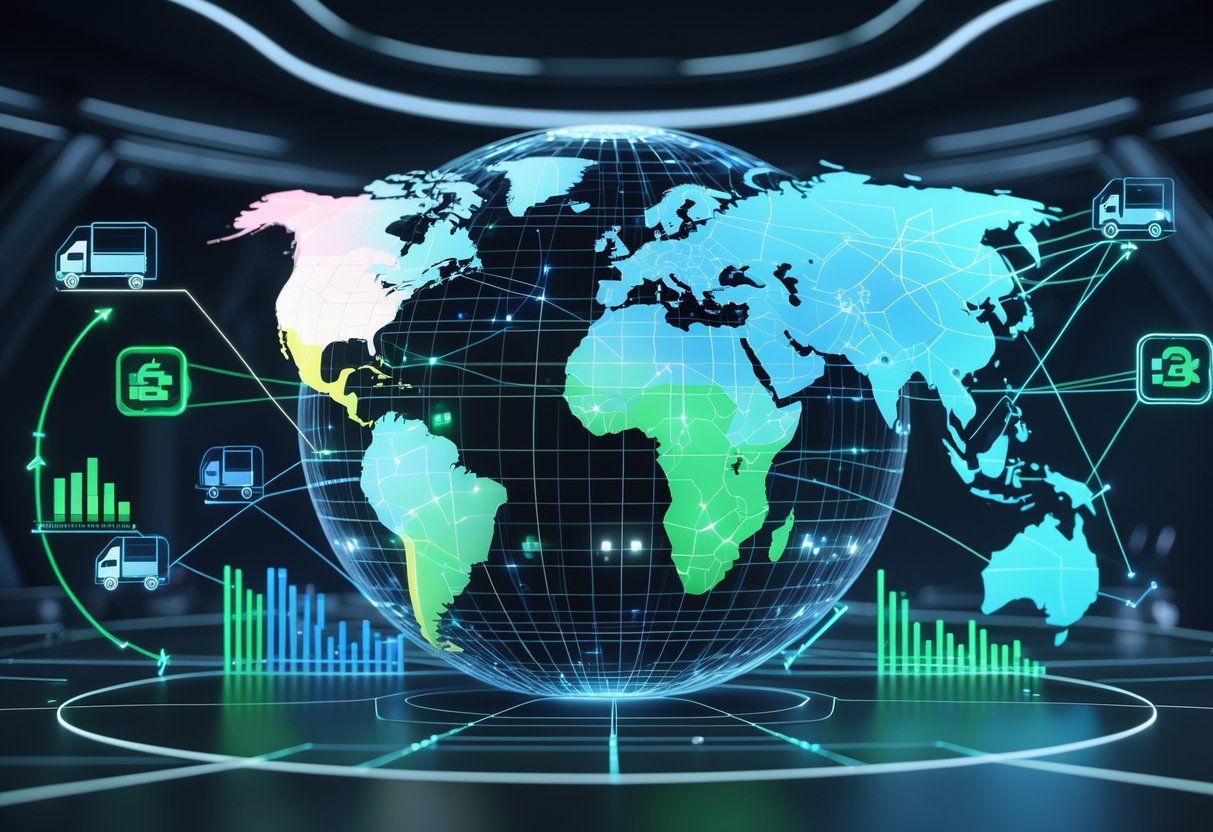
Region locking is a major economic tool for content providers. It lets companies control prices and segment the market by geography, making it easier to charge different prices for the same digital content and stop people from buying cheaper versions elsewhere.
Price Discrimination and Arbitrage Prevention
Regional pricing is at the heart of digital distribution economics. Gaming companies often charge £60 for a new game in the UK, but only £25 in places like Poland or Brazil.
Region locks stop arbitrage—otherwise, people could just use VPNs to buy games from cheaper regions. Without these restrictions, the whole pricing setup would fall apart.
The main idea is purchasing power parity. A £60 game means something very different in the UK than in a developing country—it could be six hours of minimum wage work in one place, but forty in another.
Content providers use detailed geographical pricing matrices that look at:
- Local income averages
- How tough the competition is
- Currency stability
- How much they want to penetrate the market
This setup helps them get the most revenue from each region, while still keeping prices reasonable where people can’t pay as much.
Staggered Release Schedules Behind Region Locks
Windowing strategies are another big reason for region locks. Providers delay releases in certain places to boost revenue and manage distribution costs.
Major esports tournaments launch in top markets first, then move to others later. This creates artificial scarcity, which can drive up prices and sell more premium subscriptions.
Rolling out servers, localization, and support costs a lot and varies by region. Companies prefer to stagger these investments based on what they expect to earn.
They also use this time to see how the market reacts before committing to a global rollout. If things flop in the main markets, they can adjust or even cancel plans for smaller regions.
Content Providers’ Market Segmentation
By splitting up markets, providers can target different consumer habits and preferences. Every region has its own patterns, payment methods, and content likes or dislikes.
Regulatory compliance often means changing content for each region. Gaming companies have to deal with censorship, age ratings, and cultural sensitivities, so a single global release just isn’t practical.
Providers group regions into:
- Premium markets: Rich areas with great infrastructure
- Growth markets: Fast-growing economies with lots of new gamers
- Experimental markets: Smaller places used for testing new ideas
With this segmentation, companies can tune their content for each region while still keeping a global brand. Regional availability becomes a lever for entering new markets, staying competitive, and maximizing revenue.
Workarounds and Consumer Strategies
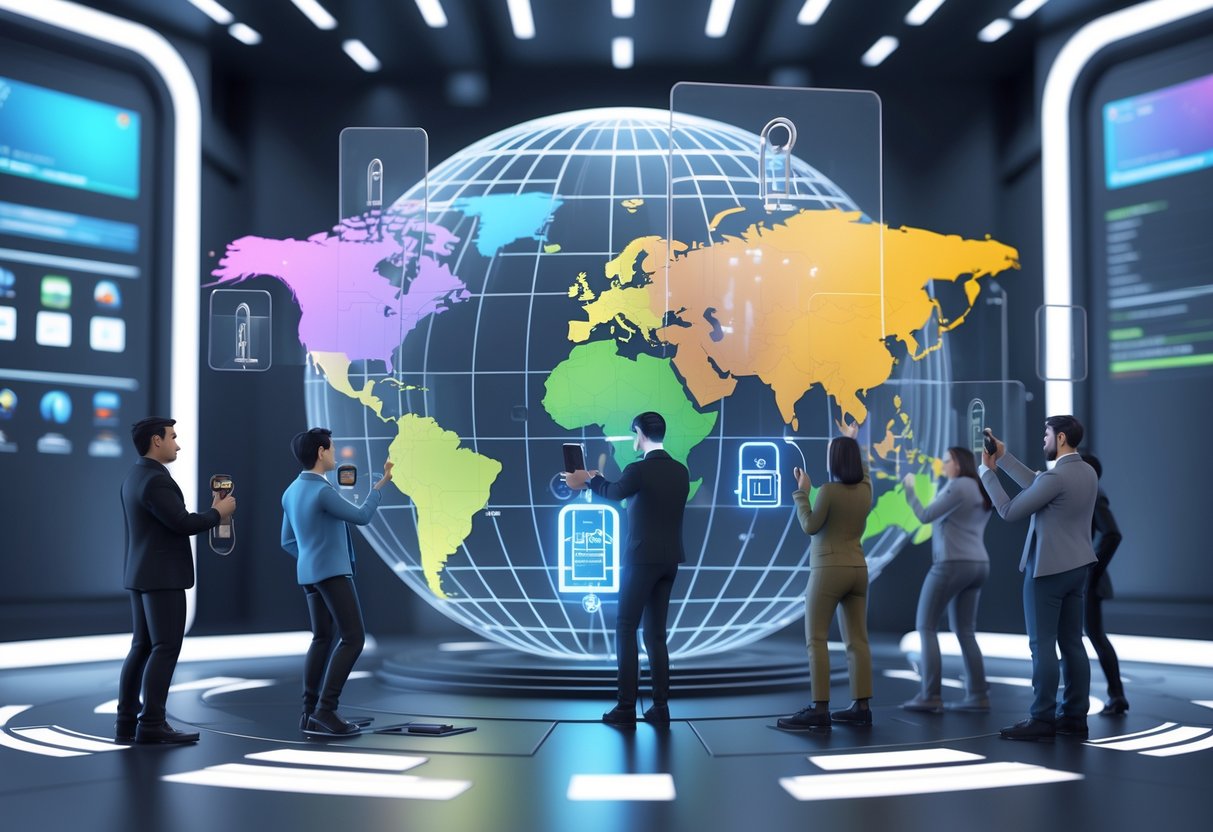
People have come up with plenty of ways to get around region locks and reach blocked content. The most popular tricks involve hiding your real location or bouncing your traffic through servers in other countries.
VPN and Proxy Server Usage
VPNs (Virtual Private Networks) are the go-to tool for dodging region locks. They encrypt your connection and route it through a server in another country.
If you connect to a VPN in Japan, for example, streaming sites and game platforms think you’re in Japan. That’s usually enough to unlock the content you want.
Good VPNs cost about £3-8 a month. ExpressVPN and NordVPN are favorites among gamers for their fast speeds and big server lists.
Proxy servers are a cheaper, simpler option. Some are free, but they’re often slow and unreliable. Proxies act as a middleman between your device and the service you’re trying to reach.
The upside? Many proxies don’t cost anything. The downside is that they don’t encrypt your traffic, so they’re less secure.
Smart DNS and Browser Extensions
Smart DNS services get around region locks by redirecting only the requests that reveal your location. Your other traffic stays untouched.
This usually means faster speeds than VPNs, since there’s no heavy encryption. Smart DNS works well for streaming and costs around £2-5 per month.
Browser extensions are the easiest fix for web content. Extensions like Hola VPN or ZenMate install right into Chrome or Firefox in a few clicks.
They spot region-locked content and reroute your traffic as needed. Most have free versions with limits on data or server choice.
Just keep in mind, browser extensions only work for web traffic. They won’t help with region-locked games or other software.
Challenges to Legal Enforcement and Compliance

Enforcing region locking faces big obstacles because laws differ from country to country and tech keeps moving faster than the rules. These issues often leave a gap between what licensing agreements demand and what authorities can actually make happen.
Jurisdictional Complications
Countries all seem to have their own ways of handling copyright laws and licensing agreements. What’s totally fine in one place might break the law somewhere else.
Streaming platforms try to operate everywhere, but local laws make legal compliance a nightmare. For instance, a streaming service could have the right licenses in the UK but suddenly face copyright infringement claims in Germany for showing the exact same thing.
The main jurisdictional headaches look like this:
- Conflicting copyright interpretations – Each country decides what counts as fair use in its own way.
- Varying enforcement powers – Some countries hand out harsh penalties, while others barely bother to prosecute.
- Limited cross-border cooperation – Governments struggle to work together against violators.
| Challenge | Impact | Example |
|---|---|---|
| Different penalty structures | Inconsistent deterrence | VPN use legal in Netherlands, restricted in China |
| Territorial licensing gaps | Content falls into legal grey areas | EU-wide licences vs national restrictions |
| Enforcement resource limits | Selective prosecution only | Focus on commercial piracy, ignore individual users |
Streaming companies often over-restrict content because they just can’t predict which enforcement actions will stick. They’d rather play it safe than risk legal trouble.
Technological Obstacles to Enforcement
Technology just keeps racing ahead of the law. People get around region locks with VPNs, proxies, and all sorts of tricks to hide where they’re really located.
Platforms need to block access by geography because of licensing agreements, but actually stopping people from sneaking in is a different story. IP address bans don’t work if users bounce their traffic through another country.
Some of the toughest enforcement challenges:
- VPN detection limitations – New services pop up faster than platforms can block them.
- Sophisticated spoofing tools – Tech-savvy users fake their location pretty convincingly.
- Mobile app vulnerabilities – Region checks on smartphones are usually weaker than on desktops.
Platforms spend millions trying to detect this stuff, but users usually find a way around it in days. Honestly, it feels like the people bypassing restrictions always have the upper hand.
Even when platforms spot VPN users, legal compliance rules change from country to country. Some places ban account termination for VPN use, while others require it.
Region Locking and Localisation

Game companies use region locking to control which markets get their products and when. This ties directly into localisation efforts and helps publishers deal with cultural differences and local legal rules.
Cultural Adaptation and Language Support
Localisation isn’t just about translation. Games need deep cultural adaptation to thrive in different regions.
Language requirements shift a lot between markets. One game might need support for a bunch of languages, different text directions, and local voice acting. Publishers use region locking to make sure players get the right language version for their area.
Cultural sensitivities can totally change a game’s content. What’s fine in the West might not work in Asia, and vice versa. Region locking gives developers a way to make different versions for different audiences.
Key localisation elements include:
- Character designs and storylines
- Currency systems and pricing models
- Religious and political content tweaks
- Colour symbolism and cultural references
Publishers control who gets what through regional restrictions. This way, each market gets something that actually fits local tastes and norms.
Local Regulations and Censorship
Governments set all sorts of rules that change from country to country. Region locking helps publishers keep up with these legal demands.
Censorship laws can be wildly different. Germany restricts violence in games. China wants government approval before release. Australia’s age rating system can ban games altogether.
Content restrictions force publishers to make multiple versions:
- Violence levels – Less gore for some countries
- Political content – Sensitive topics removed
- Religious imagery – Symbols changed or taken out
- Age ratings – Content adapted for local rules
Regional availability isn’t just about marketing—it’s often the only way to follow the law. Geographic restrictions let publishers send the right version to the right place and avoid legal headaches.
Device and Repair Limitations from Region Locking

Region locking puts up barriers that make repairs harder and limit where people can get service. These restrictions hurt consumer rights and make it tough for independent repair shops to compete with the big brands.
Right-to-Repair Movement
Region locking clashes with what the right-to-repair folks want. When devices are tied to specific areas, repair shops struggle to get the parts they need.
Key challenges include:
- Parts from other regions won’t work in locked devices
- Repair manuals are often only available in the device’s home region
- Diagnostic tools may not recognise devices from outside areas
Plenty of repair techs complain about region-locked phones or game hardware. These devices often need special software or parts that aren’t sold locally.
UK consumer protection laws support the right to repair, but region locking makes it much harder in reality. People can’t always pick the cheapest or most convenient repair option.
Gaming devices are especially tricky. Consoles and gaming laptops sometimes have region-specific firmware that blocks repairs with international parts.
Independent Repair Shops and Market Competition
Small repair shops really take a hit when they can’t fix region-locked devices. Customers end up stuck with official repair centres, which cost more.
Market impacts:
- Higher repair bills for everyone
- Fewer repair options nearby
- Longer waits for official service
- Less competition overall
Independent shops often turn away region-locked devices. They can’t risk using the wrong parts or software.
Big manufacturers like Apple and Samsung benefit from this. They can charge more since customers don’t have other choices. Consumer rights groups say this just isn’t fair.
The problem’s even worse in small towns, where official repair centres are far away. People might have to drive for hours or ship their gadgets just to get them fixed.
The Future of Region Locking and Global Access
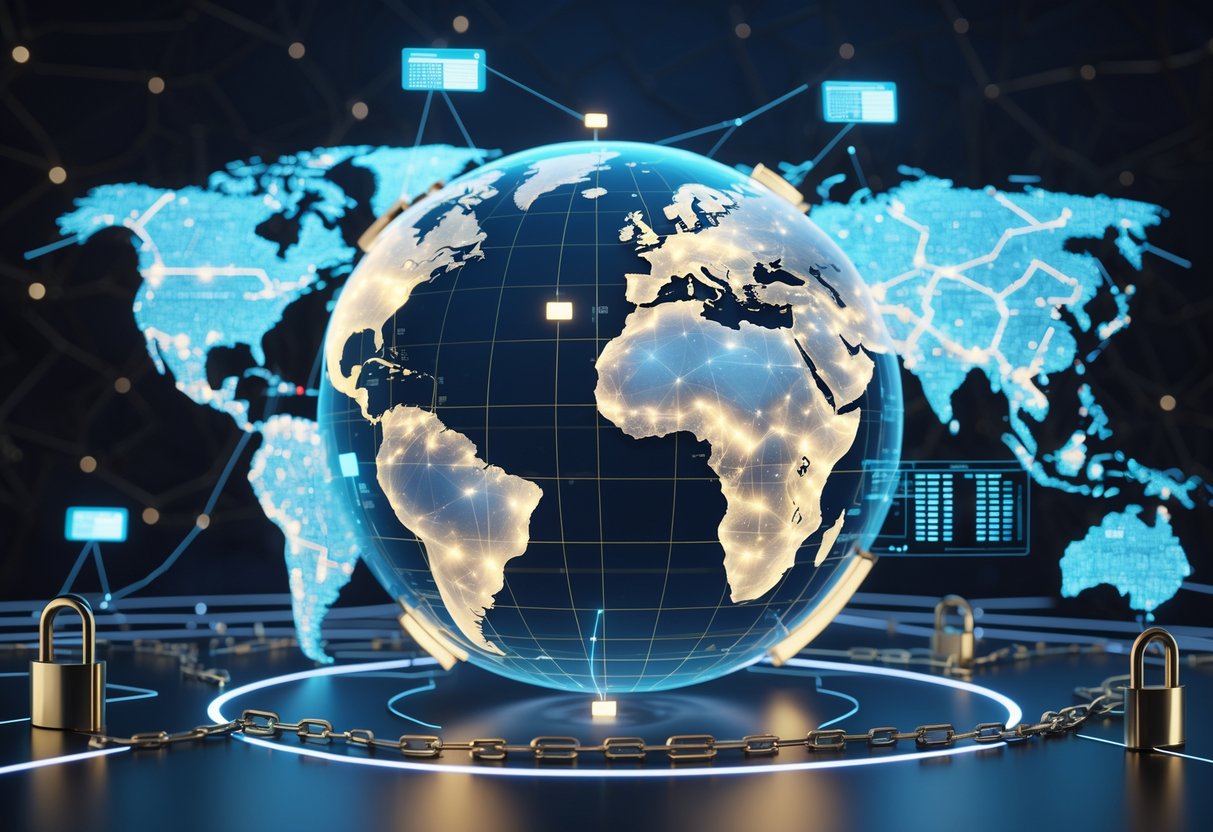
The gaming and entertainment industries seem to be moving away from strict region locks. New ways to distribute content and changing consumer expectations are forcing companies to rethink how they control access.
Emerging Content Distribution Models
Blockchain-based platforms are shaking things up. These decentralised systems let users buy and access content without worrying about geography.
Subscription-based global access is getting more popular. Xbox Game Pass Ultimate, for example, now offers most titles worldwide. This spreads costs while keeping prices fair.
Simultaneous global releases are replacing the old staggered launch model. Big publishers like Sony and Microsoft now drop games everywhere on the same day. This cuts down on piracy and helps build a global community.
Regional pricing is becoming a compromise. Companies keep content available everywhere but tweak prices for local markets. Steam’s system shows how this can benefit everyone.
Some platforms go for a “global first, regional later” approach. Premium content launches worldwide right away, and localised versions follow a bit later. Early adopters get instant access, while regional needs still get met.
Trends in Global Availability
Gaming companies say region locks don’t bring in as much money as they used to. Global accessibility grows player bases and keeps products relevant for longer.
Consumer rights groups in Europe and North America are pushing back against restrictive practices. The EU’s Digital Single Market targets unfair geo-blocking. Legal pressure is making companies justify every restriction.
Cross-platform gaming needs global access. If players compete internationally, region locks just get in the way and split up the community. Fortnite and Rocket League prove how well unrestricted play can work.
Mobile gaming leads the trend toward region-free content. App stores now offer worldwide releases by default. Even traditional console makers are catching up.
Streaming services feel the same pressure. Netflix and Disney+ are expanding their global catalogues and cutting down on regional differences. Gaming platforms are following suit.
Potential Reforms and Legal Shifts
The European Union’s Digital Rights Act could end most gaming region locks by 2027. The UK and Australia are considering similar laws.
Consumer protection laws are leaning toward global access. Courts in several countries have ruled that digital rights should move with users between regions. These cases encourage more legal challenges.
International trade deals now mention digital content restrictions. New UK-Japan and US-Canada agreements include rules against unfair geo-blocking.
Gaming industry groups recommend voluntary global standards. They say region locks should only exist for real legal or technical reasons. Major publishers are starting to follow these ideas.
Digital rights frameworks are growing fast. New laws protect people’s rights to access their digital purchases no matter where they go. This really threatens the old region-locking business model.
Frequently Asked Questions
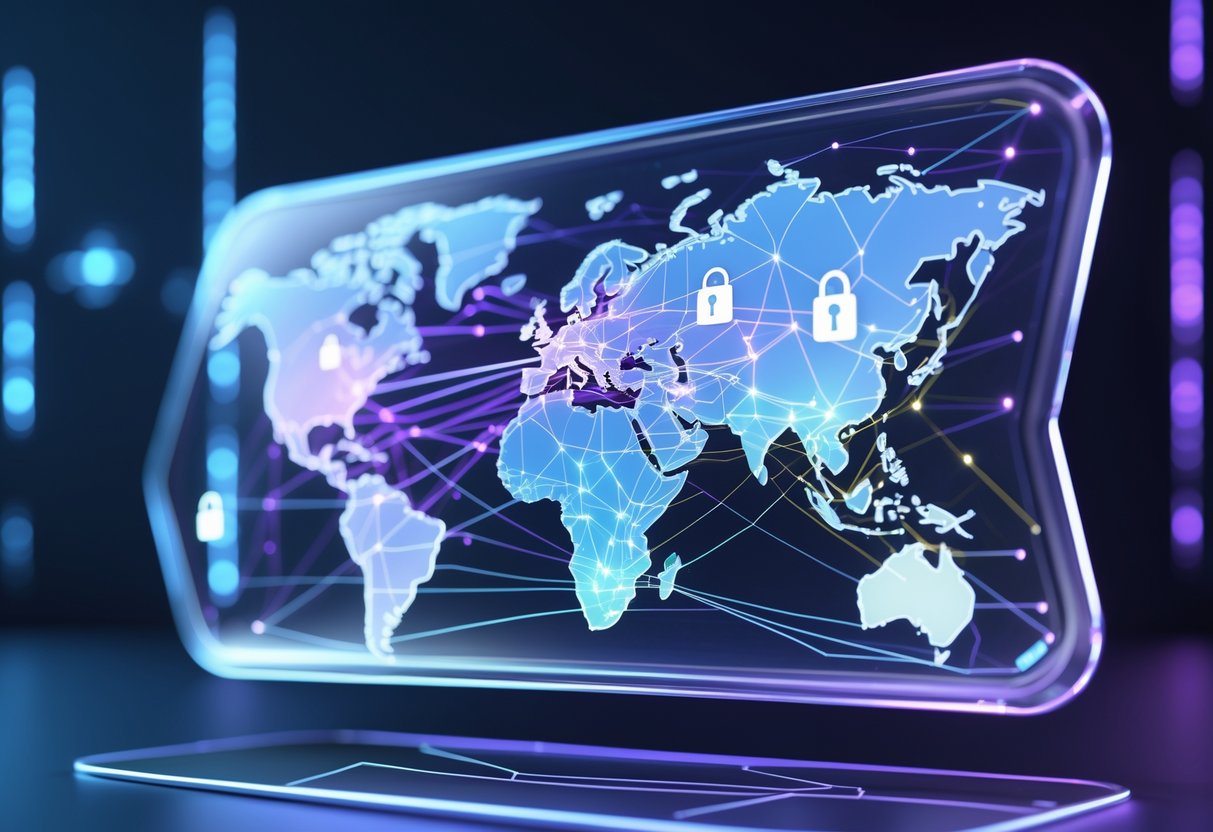
Region locking brings up loads of questions for gamers, content fans, and industry folks who run into these barriers. People want to know why companies use region locks, how to get around them, and what support looks like across borders. International support is a hot topic too.
What are the common reasons behind the implementation of region locking?
Companies use region locking mainly to follow local laws and regulations. Countries have their own censorship rules, age ratings, and content restrictions that decide what can be sold or shown.
Pricing control is another big reason. Publishers want to set prices based on what people can afford in each market.
Managing release dates also plays a part. Companies stagger launches to handle marketing, localisation, and distribution in different places.
Licensing agreements often require regional restrictions. Movie studios, music labels, and game publishers might only have rights for certain countries.
How does region locking affect the availability of digital content across different countries?
Region locking creates big gaps in what’s available from country to country. Some games, films, or streaming shows never make it to certain places because of licensing or legal barriers.
Release dates can be all over the map. Sometimes games show up months or even years later in some countries.
Content libraries change a lot between platforms. Netflix, Steam, and others offer totally different catalogues depending on where you are.
Smaller markets often get less content. Countries with fewer people or lower spending power usually see limited choices.
Can region locking influence the pricing of products and services internationally?
Region locking lets companies set different prices for the same thing in different places. Local market conditions and what people can afford drive these choices.
Currency conversion doesn’t always explain the price gaps. Sometimes the difference is bigger than just the exchange rate.
Steam and other platforms use regional pricing to make games more affordable in developing countries. But they need strict region locking to stop people from using VPNs to get cheaper deals.
Premium pricing in some regions can reflect local taxes, distribution costs, and business rules.
In what ways can region locking impact the gaming community?
Region locking can split up friends when players in different countries can’t access the same servers or game versions. This divides gaming communities by geography.
Competitive gaming gets tricky when tournaments have to juggle different regional versions. Some features or content might not be available to everyone.
Content creators have a hard time sharing gameplay with global audiences if their local version is different. This causes confusion and limits collaboration.
Language barriers get worse when region locking forces players into certain language versions. Some people get stuck with a localised version they don’t understand as well.
Is it possible to legally bypass region locks, and if so, how?
Moving to a new country is the simplest legal way to change your regional access for most services.
Importing physical products is still legal in many places. People can buy region-free games, consoles, or media players from international shops.
Some services let you change your account region. PlayStation, Xbox, and Steam allow this in certain situations, but there are usually restrictions or waiting periods.
VPNs sit in a legal grey zone. Using them isn’t illegal in most countries, but breaking a platform’s terms of service could get your account suspended or banned.
What are the implications of region locking for international warranties and customer support?
Warranty coverage usually sticks to the region where you bought the product. So, if you pick up a console in Japan and later move to the UK, you might find it tough—or even impossible—to get warranty service.
Customer support teams rarely help with items bought from another region. You’ll probably run into language barriers or totally different support systems, which makes things even trickier for international customers.
Repair shops often just won’t touch imported devices. Local repair techs might not have the right certifications or tools, and sometimes the technical specs just don’t match up.
Software updates can get weird too. Updates might roll out differently depending on where you are, so you could miss out on new features or important security fixes.

